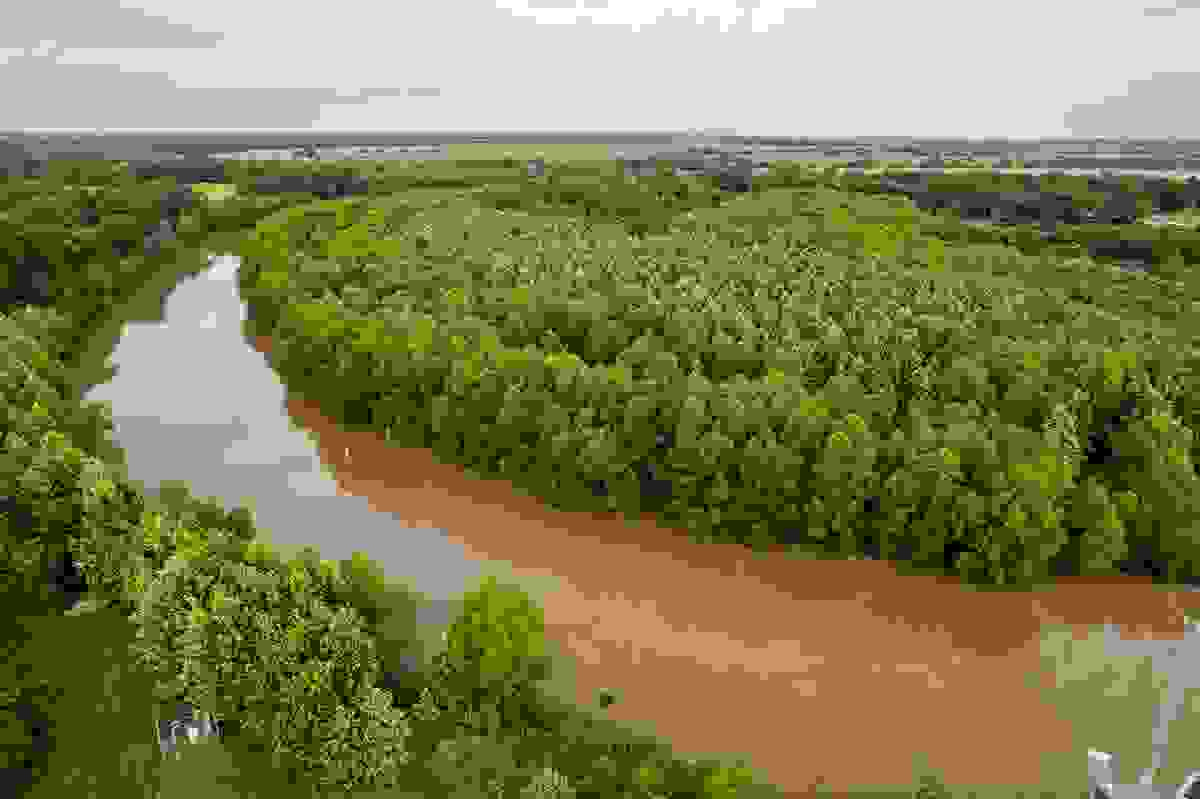The Guadalupe River. (Photo by Sam Craft, Texas A&M AgriLife Marketing and Communications.)
Peer-reviewed publications by TWRI and Texas A&M scientists
Crafting Binational Groundwater Agreements Preconditions for Progress Along the Mexico-U.S. Boundary: Rosario Sanchez, Ph.D., Texas Water Resources Institute (TWRI) senior research scientist, and co-authors analyzed the obstacles hindering bilateral diplomatic progress on transboundary aquifer sharing, developments in recent decades in bilateral international groundwater agreements, and future opportunities for feasible framework agreements.
Transitioning from MODIS to VIIRS Global Water Reservoir Product: Deep Shah, doctoral student, Shuai Zhang, Ph.D., assistant research scientist, Huilin Gao, Ph.D., professor, all in the Zachary Department of Civil and Environmental Engineering at Texas A&M, and collaborators developed NASA’s Visible Infrared Imaging Radiometer Suite (VIIRS) based Global Water Reservoir (GWR) product. The resulting dataset includes reservoir areas, elevation, storage, evaporation rate, and evaporation loss for 164 large global reservoirs, providing insights for long-term trend analysis and hydrological modeling.
SC.HAWQS: A User-Friendly Web-Based Decision Support System for Regional Water Resources Management Under a Changing Climate: Raghavan Srinivasan, Ph.D., director of the Texas A&M AgriLife Blackland Research and Extension Center, as well as a professor in the Departments of Ecology and Conservation Biology and Biological and Agricultural Engineering at Texas A&M, co-authored this research on large-scale watershed tools and their efficiency. They developed the South Carolina Hydrologic and Water Quality System (SC.HAWQS) as a user-friendly, web-based decision support system, utilizing the Soil and Water Assessment Tool (SWAT) as its core engine. They found that the SC.HAWQS platform could serve as a valuable tool for regional water resources management, offering accessible modeling capabilities for sustainable decision-making under a changing climate.
Comparative Performance Assessment of Physical-Based and Data-Driven Machine-Learning Models for Simulating Streamflow: A Case Study in Three Catchments across the US: Co-authored by Hongbin Zhan, Ph.D., professor in Texas A&M’s Department of Geology and Geophysics, this research compared machine-learning models (MLMs) and physical-based models (PBMs). Their analysis found that the performance of MLMs and PBMs is variable under different seasonal, climatic, and topographic conditions, and concluded that MLMs can better capture the rainfall-runoff relationship than PBMs, when the coefficient of variation is large.
Bridging the divide between inland water quantity and quality with satellite remote sensing: An interdisciplinary review: Co-authored by Ryan Riggs, Ph.D. candidate in the Department of Geography at Texas A&M, Huilin Gao, Ph.D., professor in the Zachary Department of Civil and Environmental Engineering at Texas A&M, and others, this study tracked trends in remote sensing research publications related to water quality and water quantity. Their findings showed that few have used remote sensing to study both water quality and quantity together.
Water-related research and news from universities around Texas
Hybrid wastewater treatment and reuse enhances urban water system resilience to disruptive incidents: This research co-authored by Leonardo Duenas-Osorio, Ph.D., Lauren Stadler, Ph.D., and Qilin Li, Ph.D., all faculty in civil and environmental engineering at Rice University, examined Houston’s wastewater system and compared its disruptions, such as pump station failures, pipe leakage, and source water contamination. Their analysis found that hybrid urban water systems that combine conventional, centralized water sources with distributed reclaimed wastewater offered potential energy savings, reduced freshwater use and proved to have increased resilience and fewer incidents. They were also able to identify parts of the existing systems most vulnerable to complications.
Revisiting Gunnar Brune’s “Major and Historical Springs of Texas” with an Analysis of the Fractal Character of Springflow: Robert Mace, Ph.D, executive director of The Meadows Center for Water and the Environment at Texas State University, and Nohemi Galaviz, wildlife biology student at Texas State University, lead this research project examining the current status of springs in Texas. Their analysis showed that 11 percent of springs had gone dry by 1981, and 30 percent have gone dry today.
The changing nature of groundwater in the global water cycle: Bridget Scanlon, Ph.D., research professor at the Bureau of Economic Geology at the University of Texas at Austin (UT-BEG), and Jean-Philippe Nicot, Ph.D., research professor at UT-BEG, and co-authors reviewed climate change impacts on groundwater quality and quantity. The impacts are evident in altered recharge rates, greater groundwater contribution to streamflow in glacierized catchments, and enhanced groundwater flow in permafrost areas, the researchers found. They reviewed the changes that groundwater is experiencing now and discussed future challenges to groundwater supplies.


